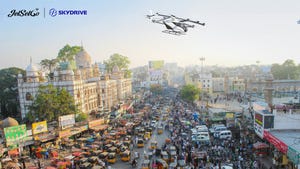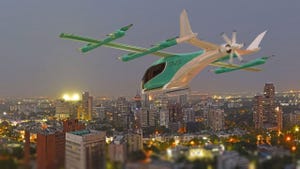UV-C Lighting System Relies on Smart Building AutomationUV-C Lighting System Relies on Smart Building Automation
The winner of IoT World Today’s COVID-19 IoT Innovation Award has developed a smart building automation platform that uses a multi-pronged strategy to protect building occupants.
September 14, 2020

As organizations look to reopen offices, shops and other buildings in the next chapter of COVID-19, interest in disinfection technologies has surged.
But so is the awareness that technologies such as germicidal ultraviolet light, also known as ultraviolet-C (UV-C), can be unsafe if misused. The short-wavelength radiation in the UV-C spectrum can penetrate organic molecules, including DNA.
The winner of IoT World Today’s COVID-19 IoT Innovation Award, Igor, has created a technology that can disinfect individual rooms or entire offices while protecting occupants. The efficacy of UV-C lighting at killing microbes increases with exposure. “With the lights we are using, it is about 90% decontamination for every 20 minutes,” said Dwight Stewart, founder and chief technology officer of Igor. “You can get 99.9% decontamination after about 80 minutes.” Organizations using the technology might do longer cycles in the middle of the night and run periodic cycles throughout the day.
To optimize safety during mid-day disinfection phases, the Nexos Intelligent Disinfection system relies on building automation. A smart lock on a given room can display warnings to tenants not to enter. If a door manages to open mid-cycle, a triggered door-contact sensor could deactivate the system.
[For all our IoT World coverage, read our IoT World 2020 conference guide.]
Occupancy sensing using, for instance, people-counting or infrared sensors provides another layer of security, so even if people aren’t in motion, the technology can still sense occupancy. “ “Think of a library study room,” Stewart said.. “We’ve all had late-night study sessions and fallen asleep. So, you don’t want to rely on just sensing for motion.”
Open rooms pose a challenge because doors can’t simply be locked to keep tenants out when conditions warrant. “You just want to make sure that anyone that would be approaching the space would be sensed,” Dwight said. “You would want to put occupancy sensors or other sensors further out in the periphery of the area that is being disinfected to let someone know who is approaching.”
One consideration for organizations using UV-C to disinfect is shadow. Ceiling-mounted lights can’t reach beneath desks, tables or beds. “If you want to be extremely thorough, you can have people wipe down surfaces,” Stewart said.
UV-C lighting should be used in concert with other measures such as having tenants wear masks when possible, frequent hand washing, social distancing in shared spaces and manual disinfection of commonly touched objects.
Igor can integrate other technologies to provide more-comprehensive disinfection. “Adding different systems — whether HEPA filters or airflow technologies that can minimize the amount of recirculation, but bring in more outside air — there are a lot of different strategies we can add to our technology over time,” Stewart said. “There are a lot of ways to disinfect.”
About the Author
You May Also Like






